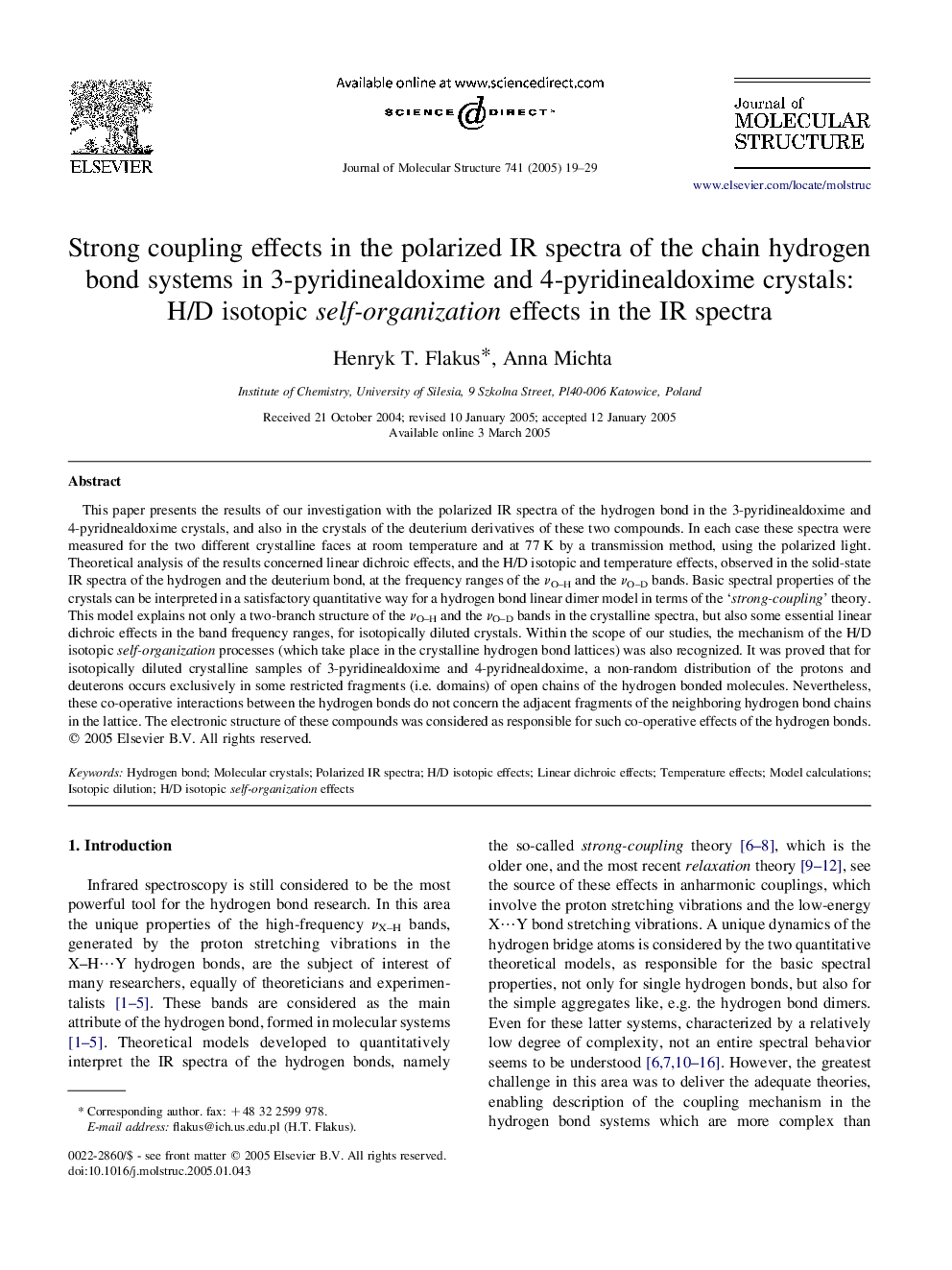| Article ID | Journal | Published Year | Pages | File Type |
|---|---|---|---|---|
| 9770203 | Journal of Molecular Structure | 2005 | 11 Pages |
Abstract
This paper presents the results of our investigation with the polarized IR spectra of the hydrogen bond in the 3-pyridinealdoxime and 4-pyridnealdoxime crystals, and also in the crystals of the deuterium derivatives of these two compounds. In each case these spectra were measured for the two different crystalline faces at room temperature and at 77 K by a transmission method, using the polarized light. Theoretical analysis of the results concerned linear dichroic effects, and the H/D isotopic and temperature effects, observed in the solid-state IR spectra of the hydrogen and the deuterium bond, at the frequency ranges of the νO-H and the νO-D bands. Basic spectral properties of the crystals can be interpreted in a satisfactory quantitative way for a hydrogen bond linear dimer model in terms of the 'strong-coupling' theory. This model explains not only a two-branch structure of the νO-H and the νO-D bands in the crystalline spectra, but also some essential linear dichroic effects in the band frequency ranges, for isotopically diluted crystals. Within the scope of our studies, the mechanism of the H/D isotopic self-organization processes (which take place in the crystalline hydrogen bond lattices) was also recognized. It was proved that for isotopically diluted crystalline samples of 3-pyridinealdoxime and 4-pyridnealdoxime, a non-random distribution of the protons and deuterons occurs exclusively in some restricted fragments (i.e. domains) of open chains of the hydrogen bonded molecules. Nevertheless, these co-operative interactions between the hydrogen bonds do not concern the adjacent fragments of the neighboring hydrogen bond chains in the lattice. The electronic structure of these compounds was considered as responsible for such co-operative effects of the hydrogen bonds.
Keywords
Related Topics
Physical Sciences and Engineering
Chemistry
Organic Chemistry
Authors
Henryk T. Flakus, Anna Michta,
